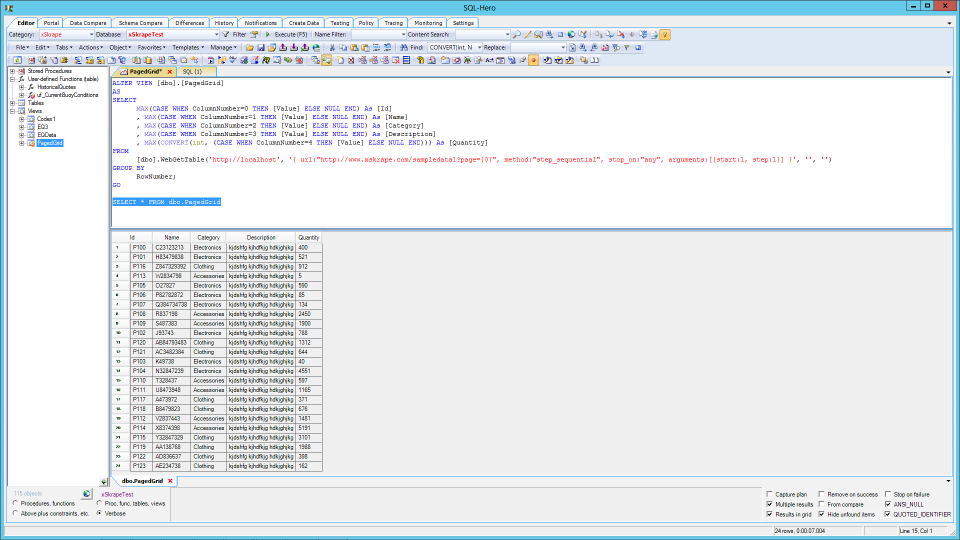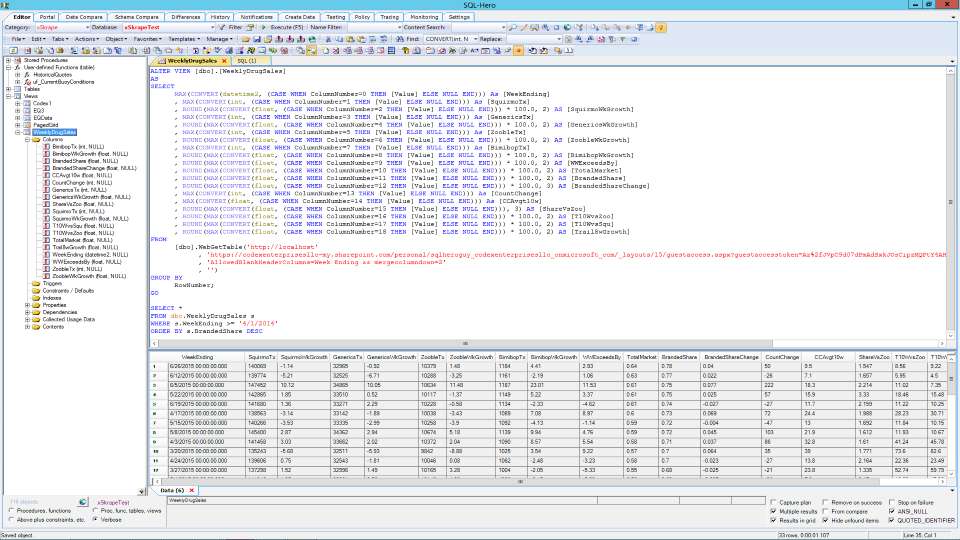

xSkrape Examples - SQL Server
Product Filter:
- How to use these examples
-
- Common to all versions of xSkrape is our xSkrape Fundamentals document (PDF). We suggest you start here to get familiar with common concepts that help when reading examples and reference documentation.
- Page through examples using the buttons below the slide slow or the "Next" / "Prev" links that are visible when the cursor is inside the slide-show image.
- Images contained within examples can be clicked on to get a full-screen view.
- It's a good idea to browse through all examples, even for product editions you might not be using currently. Why? There's a lot of commonality and something you learn about say XS.QL in one product will be applicable to all product editions.
- Also visit our working samples that contain embedded documentation as well.
- We believe you'll get more out of practical examples than long user manuals. However, if you feel we could explain anything better, please let us know and we will!
 Pulling data from an RSS feed requires understanding the structure of the data and coming up with an expression (or expressions) to get the data of interest. In this example we use a NOAA RSS feed to pull current wind speeds and other related information from ocean buoys, into SQL Server. (This is a specific example of the more general case of accessing any external XML data source.)
Pulling data from an RSS feed requires understanding the structure of the data and coming up with an expression (or expressions) to get the data of interest. In this example we use a NOAA RSS feed to pull current wind speeds and other related information from ocean buoys, into SQL Server. (This is a specific example of the more general case of accessing any external XML data source.)
 Pulling tabular data from web pages is limited to "one page at a time" in many tools - but not for xSkrape. In this example we pull data from a paginated grid into a single view inside a SQL Server database.
Pulling tabular data from web pages is limited to "one page at a time" in many tools - but not for xSkrape. In this example we pull data from a paginated grid into a single view inside a SQL Server database.
 There are existing ways you can import Excel and/or comma-separated data for use by SQL Server. xSkrape offers another, potentially easier way to do this, presenting the final product as a view or inline UDF. It can even import data contained within a .zip file! (For example, as you might expect if the file was very large.)
This example also illustrates having the data source stored "in the cloud" - we use OneDrive in this example, but others are possible. (More generally, anything that can be accessed via a URL.)
There are existing ways you can import Excel and/or comma-separated data for use by SQL Server. xSkrape offers another, potentially easier way to do this, presenting the final product as a view or inline UDF. It can even import data contained within a .zip file! (For example, as you might expect if the file was very large.)
This example also illustrates having the data source stored "in the cloud" - we use OneDrive in this example, but others are possible. (More generally, anything that can be accessed via a URL.)
 This example is a complete "mini-application" that pulls data from multiple data sources (both CSV and HTML) and consolidates it in a functional stock screening tool that can be extended and enhanced based on your own requirements.
This example is a complete "mini-application" that pulls data from multiple data sources (both CSV and HTML) and consolidates it in a functional stock screening tool that can be extended and enhanced based on your own requirements.